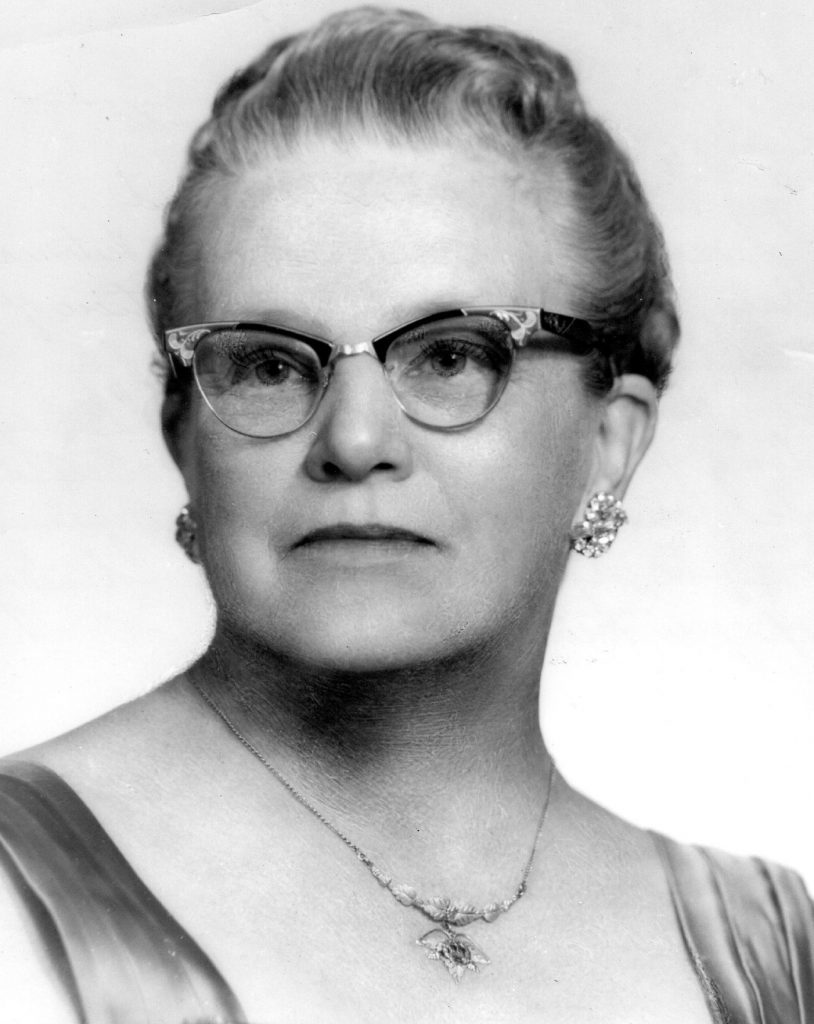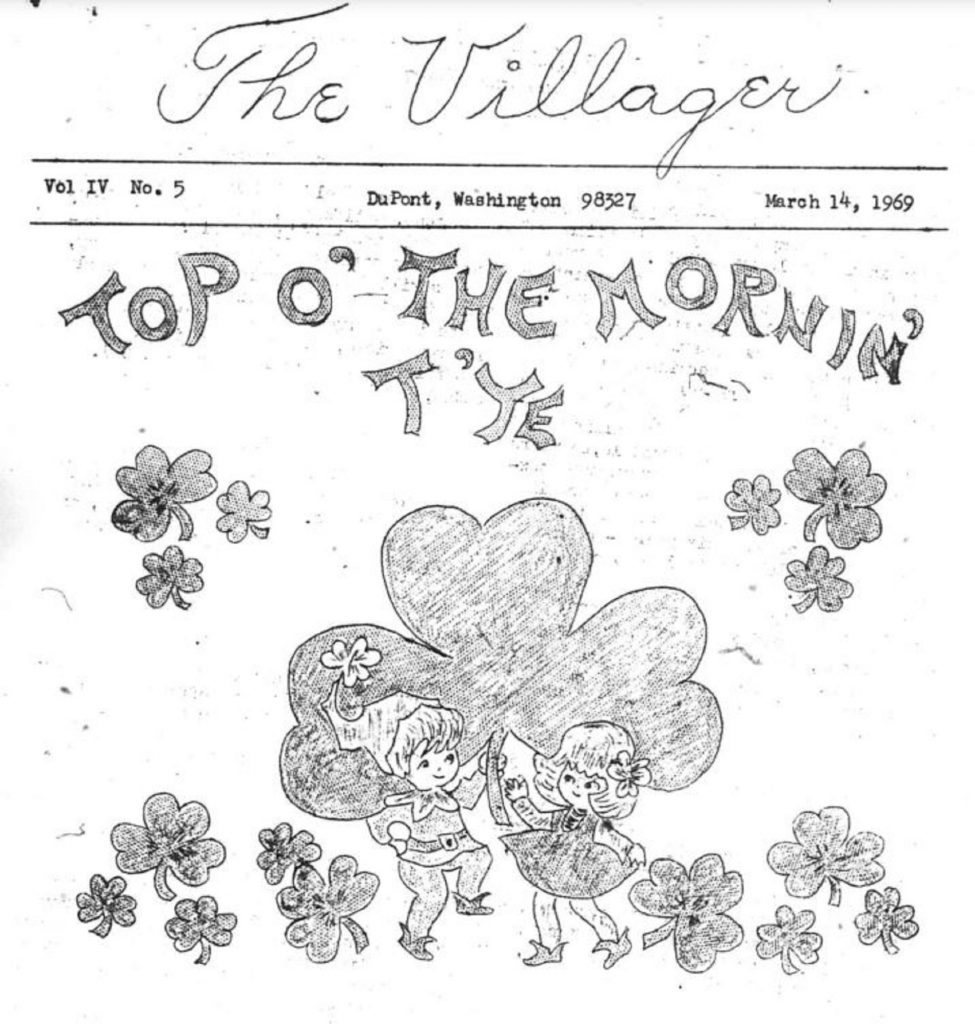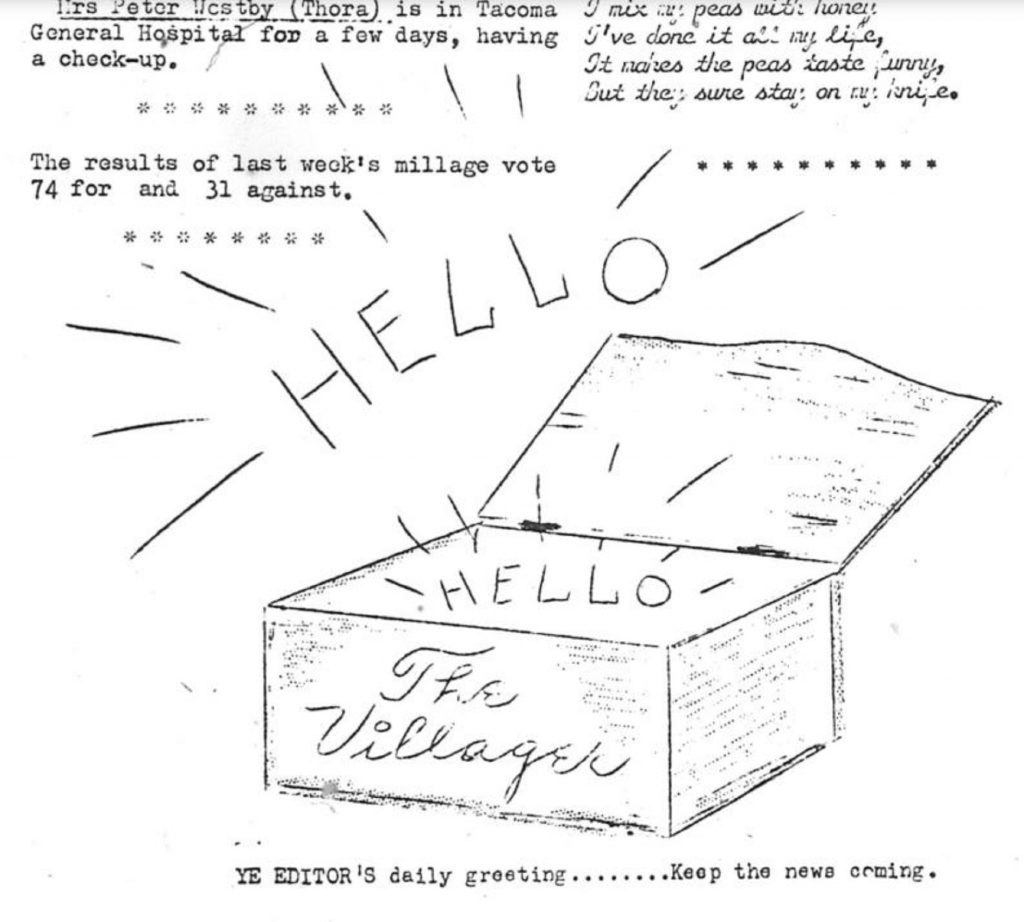In 1966, after years of getting only newspapers from neighboring communities, DuPont finally had a newspaper of its own, “The Villager.” Published for ten years, it covered local news and events. The editor of this newspaper was May Munyan.
May was born on June 21, 1896, to Charles and Olive LaBrash at their farm in North Dakota. Like many women at the time, she became a teacher, teaching in a one-room schoolhouse for four years. In 1920, she spent the winter with her parents at their new home in Puyallup. Unlike many visitors, May liked Western Washington’s wet and mild climate, and a short visit became a permanent stay.
She worked for a bank at Camp Lewis (now JBLM) before marrying Carl Gaul (1886-1948), a Nisqually Valley farmer, 15 months later. The couple had three sons — Carl, John, and Thomas. They later moved to a large farm near Spanaway, where they raised cows and turkeys, which they called Gaul’s Turkey Pen. After Carl died in 1948, May sold their farm and moved to Parkland.

In 1959, May remarried. Her husband was Lester Munyan (1888-1978), a widower whom she had known for nearly 40 years. Lester was born in New Jersey and trained as an electrician at Repauno Chemical Company before being assigned by its parent company to the DuPont Powder Works Plant in the new community of DuPont, Washington. He worked for the company until his retirement in 1949 and was active in community life, including serving on the school board. Lester was a widower. His wife, Charlotte, died in 1958.
After their marriage, May moved into Lester’s home in DuPont. At the time, the community was in the midst of big changes. The DuPont Village, the historic heart of the modern community, was built beginning in 1909 to house workers from DuPont Powder Works and their families. This new community was named for the company.
DuPont was a company town, with homes owned by the DuPont Company and rented by workers and their families. But in 1951, the company decided to sell the houses to their residents and the community was incorporated as a city, though it largely remained a one-industry town.

It was an exciting time, and May quickly became involved in DuPont’s community life. She grew interested in her new home’s history. Working with local historians like Delbert McBride, she wrote, “DuPont: The Story of a Company Town” (Puyallup: The Valley Press) in 1972. “The inspiration for publishing this book,” she wrote in her acknowledgments, “comes from the fact that the only written history of the town of DuPont appears to come from newspaper clippings, pamphlets of individual incidents, and the reminisces of the townspeople, many of whom were born here, and whose parents were employees of the DuPont Company.”
The book included a large section of recollections from long-time residents but also had chapters on Fort Nisqually, DuPont Company, DuPont school district, DuPont Community Presbyterian Church and the local boy scout troop.
May’s book remains a classic on DuPont history and was a significant source for the 2019 Images of America: DuPont, written by father-daughter authors Drew and Jennifer Crooks.
But May’s interest in history went beyond writing. She was also instrumental in the creation of the DuPont Historical Society. The Society opened the DuPont Historical Museum in 1977 and continues to operate it today in cooperation with the City of DuPont. The museum is located in the Village’s old meat market and city hall building.

But May’s interest in the DuPont community extended to present issues, not just the past, and she saw that the community lacked a newspaper of its own. Residents subscribed to nearby Tacoma newspapers, and correspondents sent regular columns of social and community news to them over the decades.
May Munyan debuted The Villager in 1966. Sponsored by the DuPont Garden Club, this community newsletter was DuPont’s first newspaper. The paper was published on the second and fourth Fridays of the month and consisted of several mimeographed pages covering community news. It included various topics, from city government information to school lunch menus and other community happenings. People could send personal news about birthdays, trips and other events to May. There was even a box on her porch for people to drop off their information for the paper.
For ease of production, The Villager was illustrated with charming line drawings instead of photographs, including occasional crossword puzzles. May served as editor but was ably assisted by others like Marie Bonnor, Juanita Rangor, and Pola Andre (who would later become mayor of DuPont).
The Villager ended in 1976, the same year the DuPont Company closed its plant due to changing economic and market conditions. After a long period of negotiations and planning, the former company land was developed by Quadrant as Northwest Landing, an industrial, commercial and residential development. DuPont grew from about 600 people when May lived there to over 9,000.
May did not live to see all these changes. Lester died in 1978, and May passed away on March 1, 1986, at a Tacoma nursing home. She was eighty-nine. But her legacy is continued in the DuPont Museum and the overall community, she helped to forge and strengthen.













































